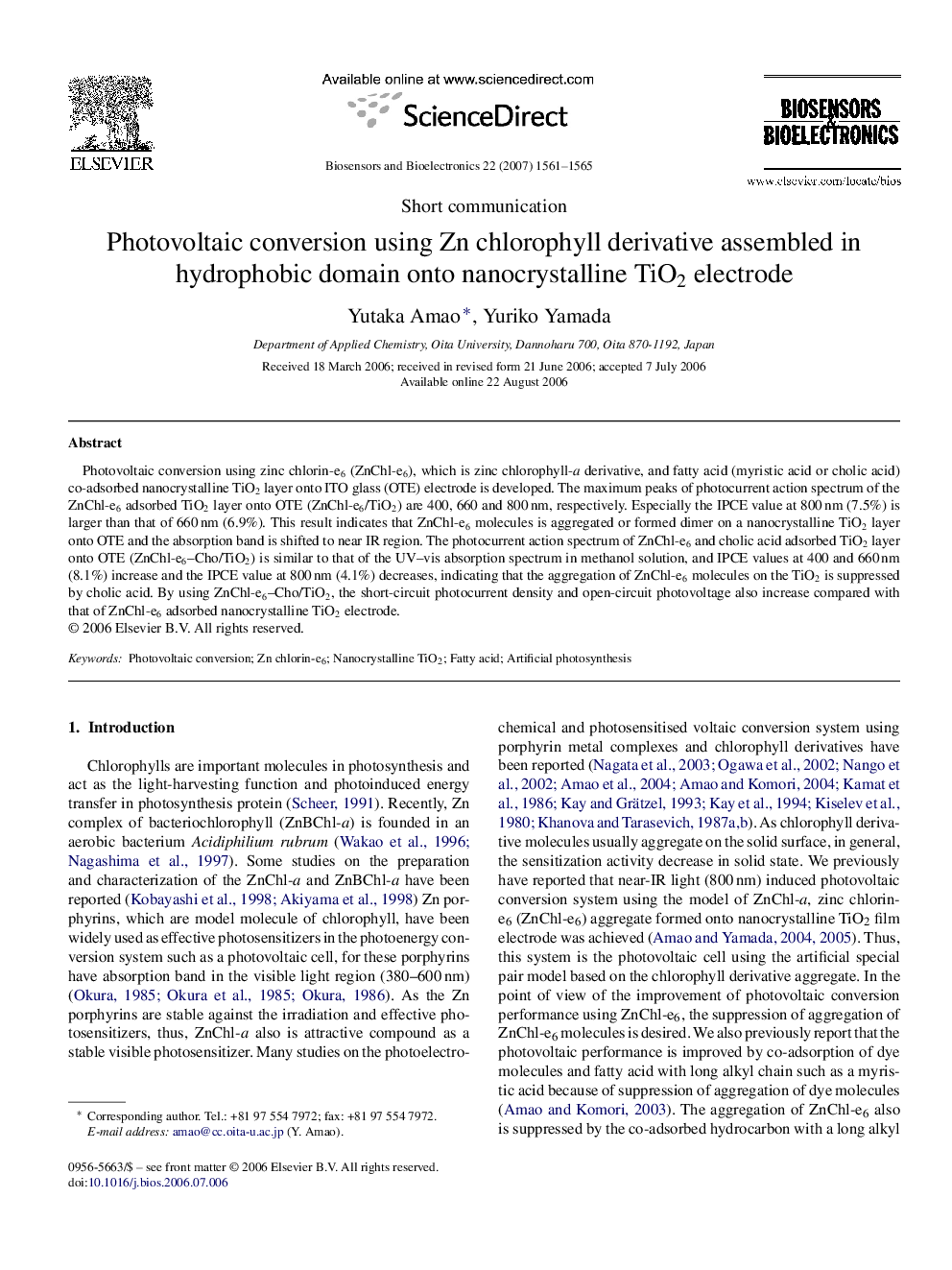| Article ID | Journal | Published Year | Pages | File Type |
|---|---|---|---|---|
| 870241 | Biosensors and Bioelectronics | 2007 | 5 Pages |
Photovoltaic conversion using zinc chlorin-e6 (ZnChl-e6), which is zinc chlorophyll-a derivative, and fatty acid (myristic acid or cholic acid) co-adsorbed nanocrystalline TiO2 layer onto ITO glass (OTE) electrode is developed. The maximum peaks of photocurrent action spectrum of the ZnChl-e6 adsorbed TiO2 layer onto OTE (ZnChl-e6/TiO2) are 400, 660 and 800 nm, respectively. Especially the IPCE value at 800 nm (7.5%) is larger than that of 660 nm (6.9%). This result indicates that ZnChl-e6 molecules is aggregated or formed dimer on a nanocrystalline TiO2 layer onto OTE and the absorption band is shifted to near IR region. The photocurrent action spectrum of ZnChl-e6 and cholic acid adsorbed TiO2 layer onto OTE (ZnChl-e6–Cho/TiO2) is similar to that of the UV–vis absorption spectrum in methanol solution, and IPCE values at 400 and 660 nm (8.1%) increase and the IPCE value at 800 nm (4.1%) decreases, indicating that the aggregation of ZnChl-e6 molecules on the TiO2 is suppressed by cholic acid. By using ZnChl-e6–Cho/TiO2, the short-circuit photocurrent density and open-circuit photovoltage also increase compared with that of ZnChl-e6 adsorbed nanocrystalline TiO2 electrode.
